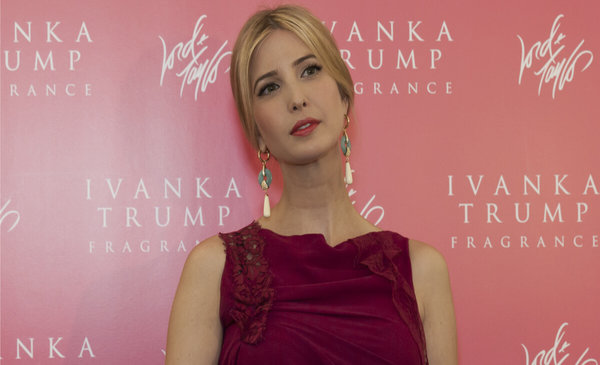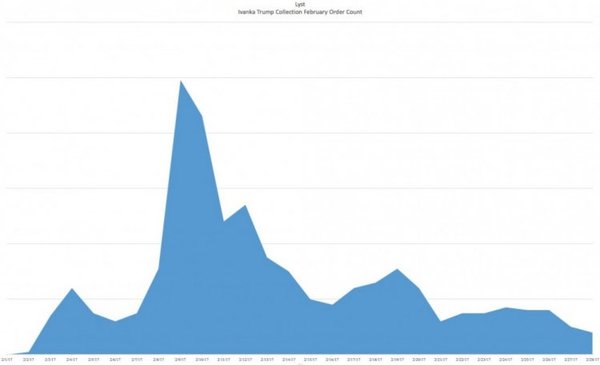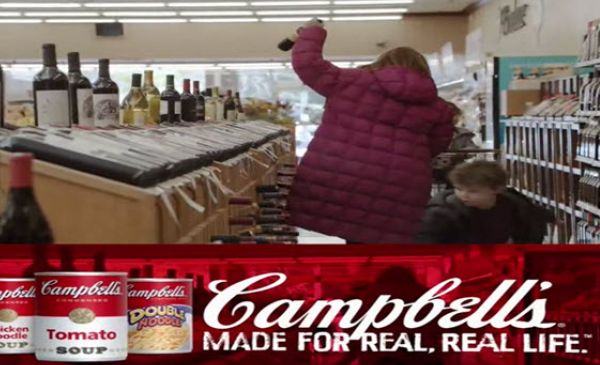ANA members view the recently announcements by Facebook and YouTube that they would break down their “walled gardens” and allow independent audits by the Media Rating Council as positive developments for the advertising industry.
ANA members view the recently announcements by Facebook and YouTube that they would break down their “walled gardens” and allow independent audits by the Media Rating Council as positive developments for the advertising industry.
Giving a presentation is a fantastic opportunity! Whether you’re a paid professional speaker, an executive addressing your colleagues, or simply someone whose been asked to make some remarks to group, getting to share your ideas/thoughts/message with others is a great opportunity to positively influence others. It’s a privilege to have people actually listen to what you have to say — and a responsibility to make sure you use their attention and time wisely. Here’s how to prepare for a presentation that honors that privilege and responsibility:
Ask yourself these three questions:
I’ve been speaking professionally for many years now and, while I still have a lot to learn and improve on, I’ve found it’s really helpful to ask myself these questions as I prepare for a presentation. I go through them before I create the content of my talk, and again after I’ve put together my presentation to make sure I’ve addressed the points, and then once more right before I go on stage as a last reminder of what’s important. These questions help keep me singularly focused on how I can be of most value to my audience.
In addition to doing prep calls with the client who booked you or the person who asked you to speak, I recommend you ask to do calls with a few participants so you can get their input as you think through the questions. These calls are usually extremely helpful and they also help establish some rapport with the audience if you acknowledge from the stage the people who helped you prepare.
Let me unpack the three questions to prepare for a presentation.
1. Why am I the absolutely right person to be speaking to this group? In other words, what do you know that fits perfectly with what the audience wants or needs to know? Of course, not every speaker is a fit for every audience, so what is it that makes you uniquely qualified to be speaking to this group at this time?
There is usually a specific reason why I’ve been asked to speak to a group — people have read my books or other content or have seen me speak at other events and they want me to share some point(s) that resonated with them. You were selected for the opportunity before you for a specific reason as well. If that reason isn’t clear, ask about it directly — but remember that sometimes people don’t know what they don’t know, so you need to think deeply and critically about the unique insights you can bring to them.
2. What are the audience’s biggest challenges and how can I help them address them? Again, ask your client or contact person directly about the audience’s challenges, but also try to “listen between the lines” because sometimes people think they have one need when they really have another. Do desk research on the industry or company, perhaps even reach out to colleagues who may have insight into the business.
Then map your content to your audience’s challenges and fill in gaps with new research or insights so you’re clear on how you can reframe or break down their challenges, present solutions to their problems, and answer their questions.
3. What should people know/think/feel/do as a result of participating in my session? We’ve all sat through a presentation that we thought was entertaining or funny or inspiring but the next day we can’t remember anything about it. This question helps ensure that people don’t leave your session saying, “That was nice,” but not changing anything as a result of it.
Whether it’s just a subtle but significant shift in perceptions or an action to be taken or a decision to be made, there should always be at least one change that should happen as a result of your talk. You might try drawing before and after columns and writing down the changes — what do people know before your session and what do you want them to know afterward, what do they think before and after, etc. I usually very explicitly tell people at the end of my talk what changes I recommend they make — it’s usually a great way to summarize or synthesize your points. There’s no sense in leaving them guessing.
Whether or not you use these specific questions, you do need to prepare diligently for a presentation. Sometimes people think they can just “wing it,” but it’s usually clear to your audience when you do. The best speakers make it look like they are speaking extemporaneously, but I can almost guarantee you they’ve done a lot of preparation.
Remember you have a terrific opportunity — you seize it and steward it well when ask yourself some probing questions as you prepare for a presentation.
related:
The post prepare for a presentation with these three questions appeared first on Denise Lee Yohn.
If you are like most business leaders around the world, you probably want to improve your employee engagement — for good reason. The Gallup organization estimates that actively disengaged employees cost the U.S. $450 billion to $550 billion in lost productivity per year. It’s clear employee engagement should be a priority for you, but in addition to asking how to engage employees, you should also ask what to engage employees with. I’ve found that great brands intentionally and specifically engage their employees with their brands. Employee brand engagement is the critical link between employees and customers.
Employee brand engagement involves:
Of course it’s important for employees to generally be excited about and satisfied by their work and to feel emotionally engaged to their companies, but that’s no longer enough. If you want to cultivate employee relationships that outlast leadership changes and volatility in the business and positively impact customer relationships, you need employee brand engagement.
The Human Capital Institute, The Conference Board, Engage Business Media, and many technology solutions and service providers stage events and conferences that focus on employee engagement. I’ve been invited to speak at several of these because of my emphasis on employee brand engagement. Check out this excerpt from a talk I recently gave on the topic, including a simple assessment question to determine the existing strength of employee brand engagement within your organization, as well as an introduction to some of the ways you can achieve it:
related:
The post employee brand engagement appeared first on Denise Lee Yohn.
By Katie Paine Although Twitter has been around for a decade, never in its history has 140 characters had the power and influence it’s enjoyed since November 9th. Sure, when the Pope began tweeting it made headlines. But it didn’t impact markets the way @realdonaldtrump has in the last few months. One outlet estimated that […]
In this webinar, Ben Brown, Senior Global Strategic Sourcing Manager – Intuit Inc., focused on what prompted them to begin this journey, what their selection criteria was and the considerations they needed to keep in mind in the selection process. He also shared key learnings from their journey, suggested any pitfalls one can avoid and shared how marketing automation and CRM has helped their marketing teams.

At a recent event my colleague Kristopher Hull looked at advertising in an enlightening way: despite all the speed and complexity in the world today, marketers still need to reach the same brain. A consumer can be hit by up to 3,000 advertising impressions a day from hundreds of brands, but can process only a limited amount of this information.
Conventional wisdom suggests that the attention span of consumers is getting shorter. But going against this wisdom is the fact that people of all ages binge-watch shows for hours on Netflix. Further, Gen Z and Millennials, often stigmatized for suffering from Attention Deficit Disorder, spend hours on end at music festivals, mesmerized by the performers on stage.
Indeed, people pay attention to information (and brands) that are relevant and meaningful to them and ignore everything else. Neuroscience-based research conducted by Kantar TNS brought to light the fact that in a typical consumer journey only 20% of touchpoints account for 80% of the decision.
To succeed, brands must deliver a message that is meaningful to their audience across all these touchpoints.
1. Educate Your Customer
This starts at the top of the funnel, where brands must provide value beyond the product by educating consumers. Indeed, 73% of consumers say that getting useful information from an advertiser is the most important attribute when they are selecting a brand (Google Analytics).
This information can be related to the product itself or to the universe of the brand. For example, luxury jeweler de Grisogono recently created an interactive tourist guide to St Moritz. This chatbot provides users with insider advice and points out unique and hidden venues at this famous ski resort. From the brand’s standpoint, it celebrates de Grisogono’s Swiss heritage and contributes to its image of creativity and glamour. The chatbot also enables the brand to interact directly with consumers.
Rather than creating content themselves, a brand can save time and money by leveraging content created by its users. Ritz-Carlton guests can share their travel photos on its Ritz-Carlton Memories website. Photos are then localized to each specific hotel, providing valuable travel information and engaging content to other guests. The luxury hotelier also encourages guests to use hashtags and amplifies their message through one of its 12 social channels.
The Ritz-Carlton website now hosts over 30,000 pages of information, photos and videos. Most of these are generated by its hotel guests. When planning their future travel, prospective guests can live their experience vicariously through the pictures and videos posted by other members. This content inspires these prospective guest to create new memories, which ultimately may lead them to book a room and companion services such as Spa treatments and dining experiences.
2. Leverage Or Create Heritage
To be meaningful, a brand must also come across as genuine. One way to achieve this is by emphasizing the brand’s heritage. The likes of Louis Vuitton and Burberry are at an advantage in this arena, thanks to their older European heritage. Although more recent, brands such as Patagonia (founded in 1973) and L.L Bean (founded in 1912) have been very successful by leveraging their American heritage. Both clothing companies play up their roots in their branding to capture their share of the newly-booming “Athleisure” market. Patagonia was initially known for its tools for climbers and L.L Bean began as an outfitter for fishing and hunting supplies. Today, both brands market extensive product lines that include both everyday wears along with their original hardcore products.
If your brand does not have any heritage, it is up to you to create one. Herschel Supply Co. has been making backpacks, luggage and duffle bags since…2009. Their old-time logo, apparent leather-straps and rustic colors all contribute to creating a sense of American nostalgia. By using this strategy and aiming at 18-35 years old hipsters, the brand has now expanded to 10,000 point-of-sales in 70 countries.
3. Build Consumer Tribes
Beyond educating consumers and leveraging their heritage, what all these successful brands have in common is they give people something to belong to. In his presentation on the inclusive future of engagement, J. Walker Smith suggests that our desire to belong provides the basis for everything we stand for.
In line with his work, academic research has brought to light that experiences shared with others are some of the most anticipated, enjoyable and memorable. Sharing emotions provides the foundation for a community. In a similar vein, Bernard Cova argues that consumers become members of “tribes” that are defined by hobbies, passions and shared emotions rather than demographics such as age, gender and income.
These “consumer tribes” do not simply consume goods in the sense of using and destroying them, but also contribute to shaping the meanings behind the products. Tribes give priority to human connections, which are always the core source of emotional value. Products on the other hand simply help facilitate linkages between these consumers. Indeed, social relationships (the “links”) are more important than things (products, brands, ideas and experiences).
Unlike traditional tribes that are bound by kinship and geography, today’s consumers belong to “neo-tribes” that don’t rely on historical tradition and are not bound by geography. Consumers do not belong to only one tribe, but to many little tribes. The core meaning of human social life can be found in the multiple social groupings we all become involved in throughout our lives. Successful brands foster these neo-tribes, turning prospects into loyal customers and advocates. These brands leverage their tribes to expand quickly all over the world and cross-sell companion products and services.
Airbnb exemplifies the power of this model, in less than ten years it has grown from a single apartment in San Francisco to over 2 million listings in 190 countries. This social marketplace is now expanding its service beyond offering only accommodation by matching travelers with the neighborhoods, homes and experiences that meet their needs. Airbnb’s ultimate goal is to deliver a much broader travel offering and have the core of its brand value proposition surpass accommodation.
To sum up, brands no longer stand out with more advertising, more products or more customization. And thanks to Amazon, consumers now take quality, service and speed for granted. Brands must give consumers something to dream about, something to believe in and most importantly something to belong to. In the words of J. Walker Smith, the value in the market place is now relationships.
Build A More Valuable Future For Your Brand At The Un-Conference – Marketing’s Only Problem Solving Event.
The Blake Project Can Help: Accelerate Brand Growth Through Powerful Emotional Connections
Branding Strategy Insider is a service of The Blake Project: A strategic brand consultancy specializing in Brand Research, Brand Strategy, Brand Licensing and Brand Education
FREE Publications And Resources For Marketers

Ten years ago a young American entrepreneur and business school graduate took a gamble. Frustrated with jewelers who appeared to exclusively target male customers when promoting female jewelry, she set out to create a collection of rings, necklaces and bracelets that were inspired by and created for successful modern women who choose their own jeweler.
A year later and the success of the initial business led her to extend her brand into women’s footwear, then accessories and finally fashion. Distribution in the top American department stores followed and by 2013, only six years after she launched her brand, the company was reportedly generating $250m in revenues.
And then her dad became President and everything changed.
Ivanka Trump might have thought that the first 10 years of her Ivanka brand were tumultuous, but nothing could have prepared her for the past six months. First, her father was recorded extolling the virtues of grabbing women by their genitals. In response, a San Francisco based web designer, Shannon Coulter, started a campaign called #grabyourwallet. Coulter listed each and every brand that had any formal business connection with Donald Trump and his family and encouraged angry women to boycott all of them until those links with Trump were severed.
Among the brands targeted was Ivanka and, despite the fact most high-end stores stocked some of the brand’s products, it was the department store Nordstrom that quickly became the main target for female ire. Initially the store defended its right to offer shoppers a choice. Then it announced in February that due to the brand’s poor sales performance in 2016, it would not be buying any Ivanka stock for the upcoming season.
President Trump was unhappy with this turn of events and resorted to Twitter, first from his private account and then from his official presidential account. He tweeted that his daughter had been treated “unfairly” by Nordstrom and that the outcome was “terrible”, exclamation mark.
Trump’s senior political advisor Kellyanne Conway was challenged about the apparent ethical quandary of a president wading into a trade dispute involving his own daughter. Conway responded by openly promoting the Ivanka brand on live national TV.
“Go buy Ivanka’s stuff, is what I would tell you,” Conway exhorted a clearly alarmed political interviewer. “It’s a wonderful line. I own some of it. I fully…I’m going to just, I’m going to give a free commercial here: go buy it today, everybody. You can find it online.”
Political Storm
Nordstrom, the usually low-profile department store, was increasingly and uneasily finding itself entering the eye of a political storm. The company’s decision to delist Ivanka was rapidly becoming one of the most debated topics on American news and was even discussed during presidential press briefings. In apparent desperation Nordstrom released a statement describing the “great relationship” the company had with Ivanka Trump but pointed out that sales of the brand in 2016 had “steadily declined to the point where it didn’t make good business sense for us to continue with the line for now”.
But it was too late for rational, objective argument. This, after all, is America 2017. For left-wing anti-Trump zealots the Nordstrom/Ivanka case was clear evidence that the President continued to defy ethical requirements to separate his business interests form his presidential affairs. For right-wing Trump supporters it was another example of liberal bias against Trump and his daughter and they applauded his defense of his child.
Saturday Night Live weighed in with sketches in which Trump’s press secretary is seen hawking Trump merchandise on live TV and a more serious take-down in which Scarlett Johansson plays Ivanka in her own perfume ad, which, as the ad reveals at the very end, is called Complicit.
With so much negative publicity and the boycott beginning to have a genuine influence on distributors there has been widespread speculation that the Ivanka brand is “in crisis”. As the Washington Post asked in February: “How exactly did the Ivanka Trump brand fall so hard, so fast – particularly in the Nordstrom ecosystem? And where does the brand go from here?”
Given that Ivanka’s target market is young professional women aged 25 to 34 and that this demographic is two thirds opposed to the Trump Presidency those questions do appear to be pertinent.
Awareness Trumps All
But dig a little deeper and it’s clear that the Ivanka brand is going to win big not despite, but because, of the scandal that now surrounds the brand. Ivanka Trump is about to triumph for two major reasons. First, most marketers underestimate the power of brand awareness.
Your average CMO is so obsessed with missions and beliefs and purpose they have entirely overlooked the most important brand building block of all: awareness. If the customer does not know you exist then all other perceptual and behavioral bets are off. Most brands have tiny brand awareness among their target market but they are unaware of this deficit because they do not measure or track their brand properly in the first place.
Even if you have awareness, whether the brand is salient to a shopper as she gazes around a department store or looks at the blinking cursor against a blank box on Amazon is an entirely different matter again. Put simply, unless you’re a brand like Ford or Apple, most of your target customers do not know that you exist.
The Ivanka scandal has propelled the brand to extremely high levels of brand awareness. For a brand that prior to last year would have been looking at sub-1% unaided awareness among its target shoppers that is a rare and invaluable coup.
At this point, however, you might want to argue that awareness might be high but the associated image that new-found awareness is attached to will turn off a significant number of these newly cognizant customers. And you’d be right. If the polling numbers are correct around two thirds of the target market who now know about the Ivanka brand are also repelled by it.
But so what? There are 20 million women in America aged between 25 and 34. Until now almost none of them knew about the Ivanka brand. We can now assume that most have heard of it and most disapprove. But that still leaves us with a fertile, brand aware and entirely positive army of just under seven million American women who are suddenly hell-bent on buying Ivanka items.
Triumph Through Targeting
That sudden surge might explain the remarkable spike in sales that Ivanka recently experienced. At the start of the year, for example, the brand languished in 550th place for orders on Lyst.com – the largest fashion ecommerce site in America. But by mid-February, when the Ivanka debate was propelling the brand to its “crisis”, it became the 11th most popular brand on the site. “We’ve never seen such a large uptick,” a Lyst spokesperson explained earlier this week. “Typically, she’s not in our top 100 sellers.”

Orders of Ivanka branded goods on Lyst.com, February 2017 (Chart: Lyst)
Again, there is a good lesson here for marketers. Don’t try to make everyone happy. You’ll end up becoming vanilla and while nobody hates vanilla, it’s never the flavor that anyone chooses when there a dozen options at the ice cream shop. Too many marketers practice their art too conservatively. You can’t make everyone happy so focus on the people you can delight.
Ivanka Trump does not need everyone to love her brand. What she needs is everyone to know it exists, to know it stands for something and for a small segment of the market to find that something attractive enough to make a purchase. And that’s exactly what happened in February. She created enormous awareness, enormous antipathy and enormous desire and made money as a result.
The only catch, and of course there has to be one, is that the Goddess of Marketing giveth and taketh away in equal measure. The political firestorm about scandals and boycotts is fading as America becomes desensitized to the Trump presidency. And as the furor fades, so too does brand awareness. Apparently after a gigantic February, sales of Ivanka products have dropped somewhat, although they are still significantly ahead of 2016 numbers.
Perhaps a new scandal is what’s needed to create the next sales spike.
This thought piece is featured courtesy of Marketing Week, the United Kingdom’s leading marketing publication.
Don’t let the future leave you behind. Join us in Hollywood, California for Brand Leadership in the Age of Disruption, our 5th annual competitive-learning event designed around brand strategy.
The Blake Project Can Help: Disruptive Brand Strategy Workshop
Branding Strategy Insider is a service of The Blake Project: A strategic brand consultancy specializing in Brand Research, Brand Strategy, Brand Licensing and Brand Education
FREE Publications And Resources For Marketer
This panel will explore promotions and privacy law issues for augmented reality games and marketing.

My team and I were once summoned to the home office in New York to review the final pitch to a highly coveted account that we had managed to lure for their national business. There, in the large but tightly packed theater at our office on Lexington Ave., we were shown the PowerPoint that would delineate the various points of our strategy. Immediately, I noticed a problem.
“Excuse me,” I said, sheepishly raising my hand like the new kid in class. “You’ve used the color blue all throughout these slides. That’s the color of their chief competitor. Our client’s color is red.”
I no sooner had I got the word “red” out, than the account supervisor shot up out of his seat in the front row and exclaimed “I warned you guys about the blue … now change it!” Then all hell broke loose, of course.
The point is simply that to think like a creative director, or a brand marketer for that matter, you must have the ability to judge well – you must practice discernment. That requires doing two things consistently: 1) Think critically, and 2) Being willing to challenge ideas, even if makes you a pain in the ass.
There’s a quote I often refer to from Sergio Zyman of Coca-Cola fame that I picked up in his book “Building Brandwidth”: “Every detail either makes a sale or breaks a sale.” Sometimes that detail can be as simple as overruling an art director’s color choice, because you know that strategically it’s a disaster waiting to happen.
Creative directors are not only called to be brilliant conceptually within the framework of the strategy, they are also called on to be brilliant judges of the creative product itself. Ideally, they will have absorbed the strategy deep down so that they can pick a winner or a loser idea within about five seconds of coming eye to eye with it, and challenge it without reservation.
The question to ask yourself, as a brand marketer, do you know your brand strategy just as well? Would you be able to articulate or even argue your brand positioning to your agency team? Would you be ready to challenge or champion ideas that support your brand marketing to anyone, including your own management?
To that end, what evaluation criteria should we, as marketers, use to practice strategic discernment for concepts that support the positioning and communication of our brands as a creative director would? Here are seven simple filters to employ for making that all-important judgment about the ideas you are presented.
1. Is the idea strategic? This, of course, is fundamental. The work should, at the very least, be defendable on its adherence to the creative brief. That’s hardly a guarantee for a “big idea” but it’s the minimum price of entry for consideration.
2. Is it simple to understand? Many so-called great ideas are simply too complicated for the target to grasp quickly. “Too obtuse,” “too nebulous,” or “esoteric” are often labels creative directors put on these failed efforts.
3. Is the idea relevant to the target? Relevancy is a quality that may not be easily discerned from the strategy, but it is nevertheless critical. This has a lot to do with having empathy, which is often revealed in the execution of the idea. For example, what mother can’t identify with the mom seen snatching a bottle of wine off the supermarket shelf, knowing that she’ll be cooped-up with her kids during an impending blizzard, as in a recent Campbell Soup campaign? That’s purely relevant and resonates with the target audience, creating enormous empathy between the brand and customer. The brand isn’t solely about nutrition, it’s about caring and nurturing – even for adults.
4. Does it solve a problem or convey a benefit? There must always be something “in it for me” from the customer’s vantage point, otherwise it’s nothing more than self-serving to the brand.
5. Does it have a call to action, preferably with urgency? This may simply be a phone number or a URL for some messages, but the inference to take action is there.
6. Is it original and memorable? OK, so there’s nothing truly original under the sun. (Wasn’t it Steve Jobs who quoted Picasso as saying, “Good artists copy. Great artists steal.”) This one is tough because most people want to move this criterion to the front of the line. After all, the first job of any ad is to get noticed. Failing that, everything else is, as they say, academic. Ideas that are clever, bold, funny, outrageous, and pushing the edge should all be encouraged and expected … strategically, that is. When Delta Airlines borrowed the “High-Ho” Disney tune from “Snow White” to celebrate the “early risers who truly change the world” (and happen to fly Delta, of course) they “stole” (see Picasso’s quote) and created an original, memorable message for the brand.
7. Does it have legs? Creative directors more often than not think in campaign mode. Big ideas can leverage lots of media vehicles to reach targets at multiple angles with plenty of repetition and frequency.
Brands must be built on a strategic foundation, and they can only soar when every detail falls into place. Your job, as the brand marketer, is to master strategic discernment to help ensure that happens.
Build A More Valuable Future For Your Brand At The Un-Conference – Marketing’s Only Problem Solving Event. May 1-3, West Hollywood, California.
The Blake Project Can Help: The Strategic Brand Storytelling Workshop
Branding Strategy Insider is a service of The Blake Project: A strategic brand consultancy specializing in Brand Research, Brand Strategy, Brand Licensing and Brand Education
FREE Publications And Resources For Marketers
Social media experts from Dell will discuss the brand’s social media policy; specifically, how the company established rules for employee disclosure in social media; created an employee advocacy training program; and most importantly, identified best practices.